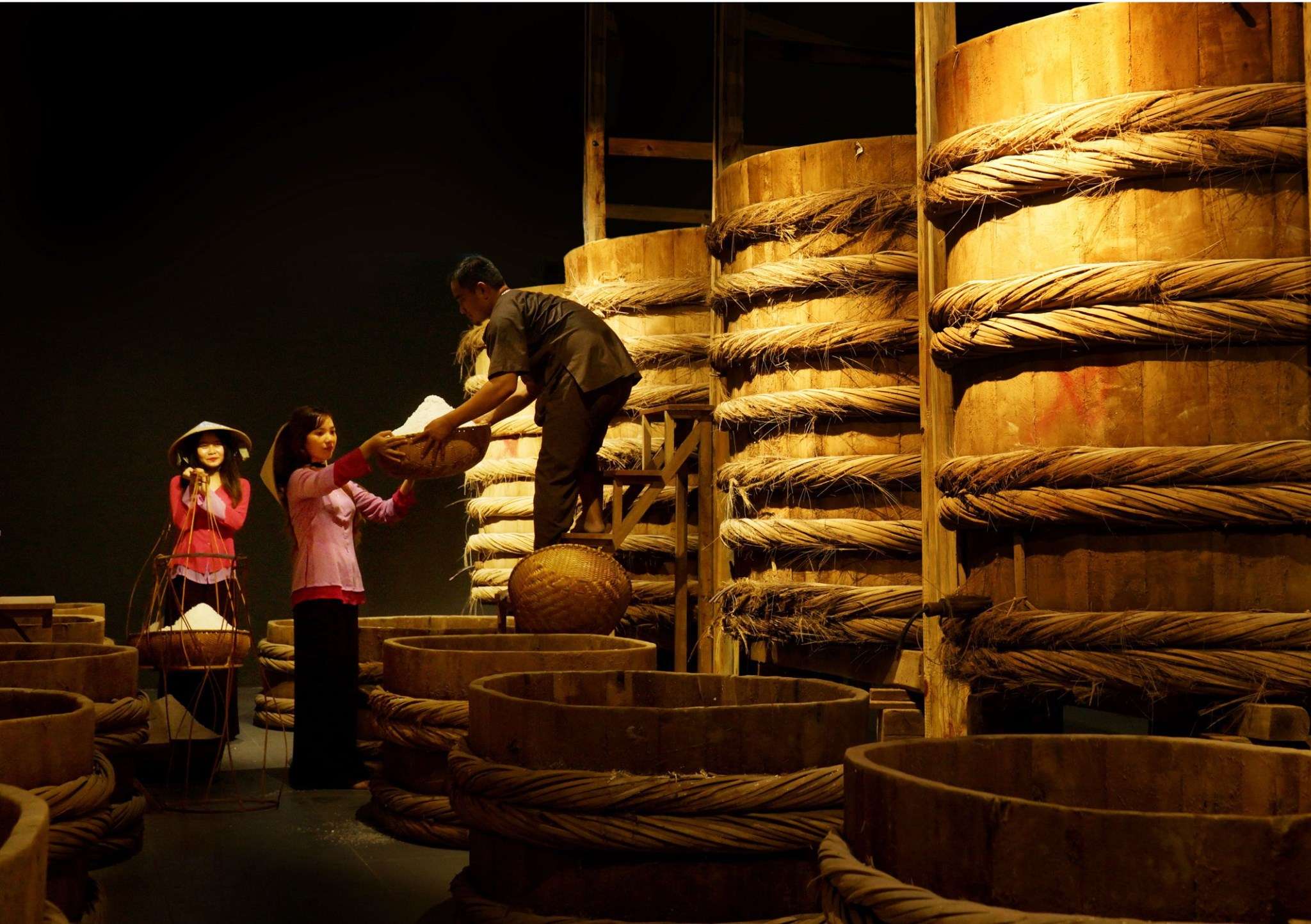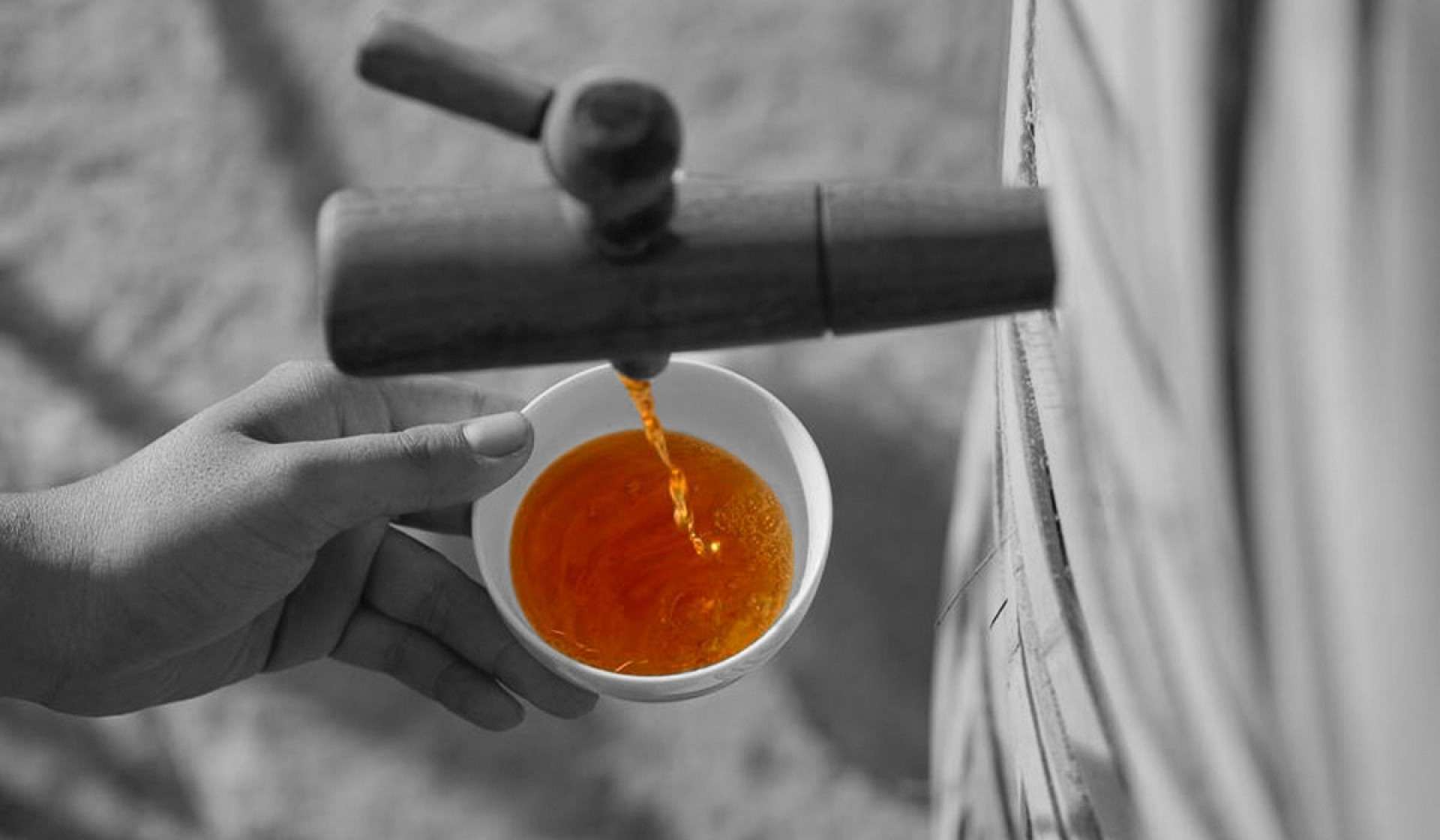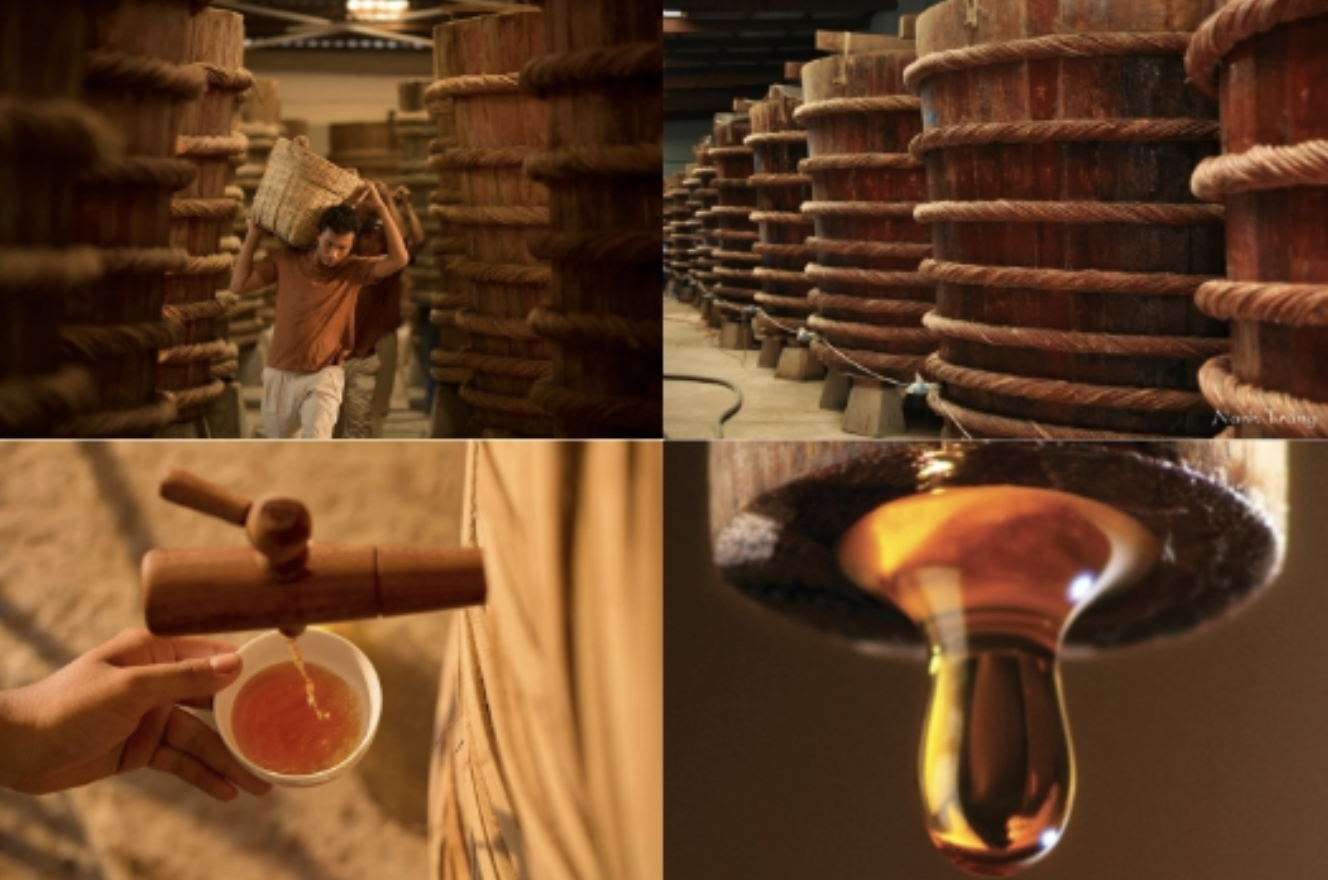Deep in the heart of Vietnamese cuisine lies a golden-brown elixir that defines the flavor of an entire nation — fish sauce, or “nước mắm”. While fish sauce is made throughout Southeast Asia, Phu Quoc fish sauce is legendary. This island-crafted delicacy is more than just a condiment; it’s a cultural heritage, a proud tradition, and a product of nature and time.

A Flavor Born from the Sea
Phu Quoc Island, nestled in the Gulf of Thailand, boasts pristine waters and abundant anchovy populations — the perfect setting for producing premium fish sauce. The island’s producers have perfected the craft over more than 200 years, and many local families have passed down their secret techniques for generations.
What makes Phu Quoc fish sauce truly special?
Anchovies (cá cơm) are caught fresh from the sea and fermented within hours to preserve their natural flavor and nutrients.
Only natural sea salt — sun-dried and aged for at least one year — is used to ensure a balanced salinity and prevent bitterness.
The sauce is fermented in giant wooden barrels made from rare local wood such as bời lời or chai, which breathe and interact with the fermenting fish.
A Slow, Natural Fermentation Process
After anchovies and salt are carefully layered in the barrels, the mixture is left to ferment naturally — without any chemicals or additives — for 9 to 15 months. During this time, enzymes break down the fish into a deep, flavorful liquid rich in amino acids and nutrients.

The first extraction from the bottom of the barrel — known as “nước mắm nhĩ” — is the purest and most prized. It’s thick, amber-colored, and bursting with a sweet-savory umami taste that sets it apart from all other fish sauces.
Every drop carries the essence of Phu Quoc’s land, sea, and skilled craftsmanship.
Protected by Law, Honored Worldwide
Phu Quoc fish sauce has received the Protected Designation of Origin (PDO) from the European Union. This means only fish sauce made on Phu Quoc Island, using traditional methods and local ingredients, can legally bear the name “Phu Quoc Fish Sauce” in Europe.

It is also registered as a Geographical Indication (GI) product in Vietnam — a powerful recognition of its quality and authenticity.
A Staple of Vietnamese Cuisine
From North to South Vietnam, fish sauce is found in every household. It is used to:
Dip: A must-have for spring rolls, grilled pork, and fried fish.
Marinate: Essential for braised pork, grilled meats, and stir-fried dishes.
Flavor: Added to soups like pho, bun rieu, and canh chua for a richer base.
The versatility of fish sauce makes it the “soul” of Vietnamese cooking. It’s not just a flavor enhancer — it is the flavor.
A Journey Worth Taking
Visiting Phu Quoc is more than a beach escape — it’s a journey into the island’s rich food culture. Several traditional fish sauce factories such as Khải Hoàn, Hưng Thịnh, or Thịnh Phát open their doors to visitors. Inside, you’ll find towering wooden vats and the gentle scent of fermenting fish — not unpleasant, but earthy and natural.
Many tours offer behind-the-scenes glimpses of:
The fermentation process
Tasting first-press fish sauce
Learning how to distinguish real vs. industrial sauce
Buying a bottle of authentic Phu Quoc fish sauce makes for a perfect souvenir — a taste of Vietnam you can bring home.
Conclusion
Phu Quoc fish sauce is Vietnam’s secret in a bottle. It speaks of patience, purity, and pride. It’s an ingredient that has shaped the country’s cuisine, brought communities together, and put a small island on the global map.
So, the next time you dip a spring roll or savor a bowl of noodle soup, remember: behind that rich, savory flavor is a long journey — from the sea, to the barrel, to your table.
